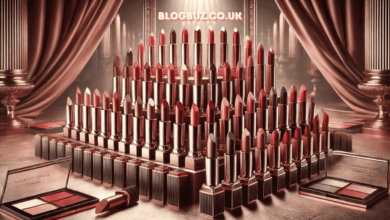A Brief History of European Chocolate and Lindt’s Contribution

Chocolate is more than a sweet treat – it’s a story of innovation, craftsmanship, and culture. While its origins date back to Mesoamerican cultures, European chocolatiers have shaped much of the chocolate that we enjoy today. Of these, Lindt has played a key role in turning chocolate from a gritty luxury into the smooth, indulgent treat that we have grown to love today.
From Mesoamerica to Europe
Cacao was cultivated for centuries. The Olmecs, Mayans, and Aztecs used it as a holy ingredient and consumed it normally in the form of a bitter flavored drink with spices. Cacao reached Europe during the 16th century when it was taken by Spanish explorers.
European inhabitants came to enjoy chocolate quickly enough, but began adding honey and sugar to the product to be compatible with European taste buds. For centuries, chocolate was treated like a luxury good, and by the great bulk of its customers, the people drank chocolate in the early modern period instead of eating it.
The Origin of European Artistry in Making Chocolate
The solidification process of chocolate began in the 18th and 19th centuries. Switzerland, Belgium, and France became hubs of innovation where chocolatiers were in search of novel ways to refine texture and flavour.
Maybe the most significant milestone was in 1879, when Rodolphe Lindt invented the conching machine. The conching machine revolutionized chocolate-making by agitating and aerating the chocolate constantly, removing bitterness and giving the smooth texture that is now characteristic of fine chocolate.
Conching also enabled ingredients to be mixed more efficiently and ensured chocolate was consistently, melt-in-your-mouth in quality. The process was soon industry standard, but Lindt brought it to the masses.
Lindt’s contribution to chocolate today
Lindt’s creation of conching was technically innovative – it changed the entire industry. By refining chocolate and making it acceptable to a broader audience, it opened the door to mass production and more widespread consumption.
Today, Lindt is renowned globally for its melt-in-the-mouth truffles, sophisticated bars, and holiday confections. Its commitment to quality from bean selection to production techniques upholds the Swiss reputation of chocolate excellence.
Lindt helped to democratize chocolate as well. What was once a luxury is now a treat for the masses, and everyone from all walks of life enjoys it. Lindt’s growth across Europe and to overseas markets brought millions into the world of indulgence in smooth, high-quality chocolate.
A Cultural Icon
Lindt chocolate has become synonymous with celebration. Whether it is gifting a box of Lindor truffles, using their dark chocolate for baking, or just unwrapping a bar on a quiet evening, Lindt products have become a part of daily life and special celebrations too.
Seasonal products like Easter bunnies and Christmas assortment have also made Lindt a part of traditional holiday traditions in Europe and globally.
The iconic gold foil and ribbon-wrapped figures aren’t just treats – they’re symbols of care, festivity, and indulgence. People across generations associate Lindt with quality and celebration, making it a staple in festive traditions.
Appreciating Chocolate Like a Connoisseur
Much like wine or cheese, chocolate can be appreciated on a deeper level. When tasting a high-quality chocolate like Lindt, pay attention to:
- Texture: Smoothness is key, thanks to the conching process.
- Snap: A crisp snap indicates good tempering.
- Aroma: High-quality chocolate contains fruit, spice, or earthy undertones.
- Finish: A well-balanced, lingering aftertaste is a sign of quality.
Try a home tasting by sampling several different types – milk, dark, and flavored chocolates – and observe their flavors and textures. Look for regional cocoa sourcing, too. Beans from Madagascar, Ecuador, or Ghana each have distinctive profiles.
The pairing of chocolate with wine, coffee, or even cheese can also be prepared for a more indulgent experience. Try a piece of Lindt 70% dark chocolate with a red wine or a strong espresso for a more sophisticated tasting.
The Legacy of Innovation
In addition to its timeless products, Lindt keeps on innovating. Their master chocolatiers experiment with new flavours, textures, and packaging design every day. From salt caramel to chilli chocolate, the brand walks a line between traditional and contemporary tastes.
Lindt has even put money in sustainability and ethically sourced chocolate. Their promise of responsible cocoa cultivation and environmental friendly practices makes sure that coming generations can savour good-quality chocolate too.
Final Thoughts
The history of chocolate in Europe is a history of development – and Lindt stands at the center of that development. From its earliest innovations through its ongoing devotion to quality, the company is the best that chocolate has to offer.
So the next time you unwrap a Lindt truffle or break off a bit of their sublime chocolate bar, remember you’re not just indulging in sweetness but centuries of master craftsman work and cultural heritage. And that’s worth savouring.



